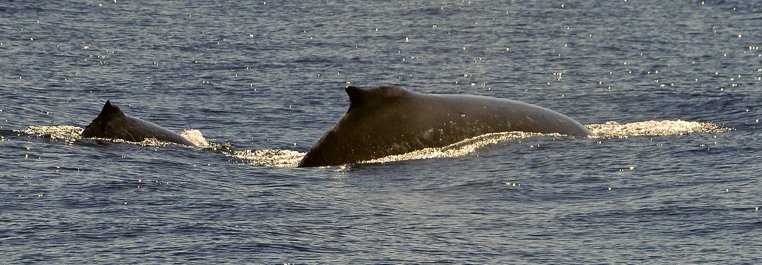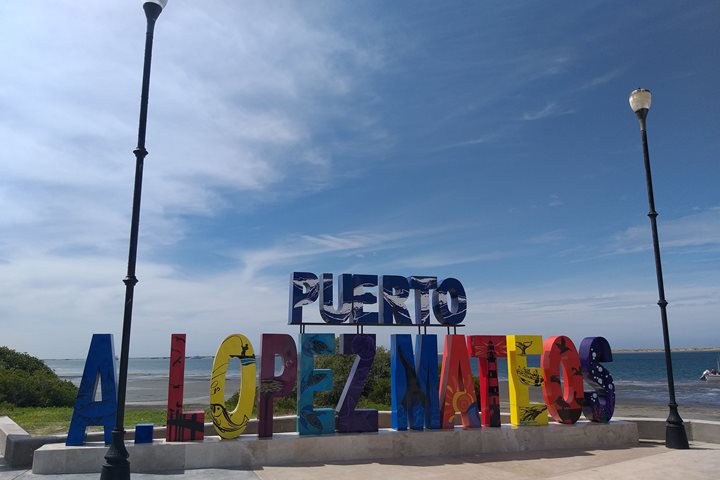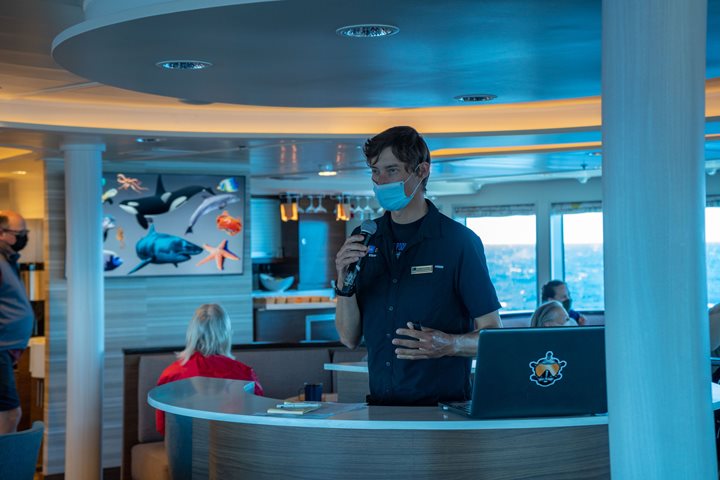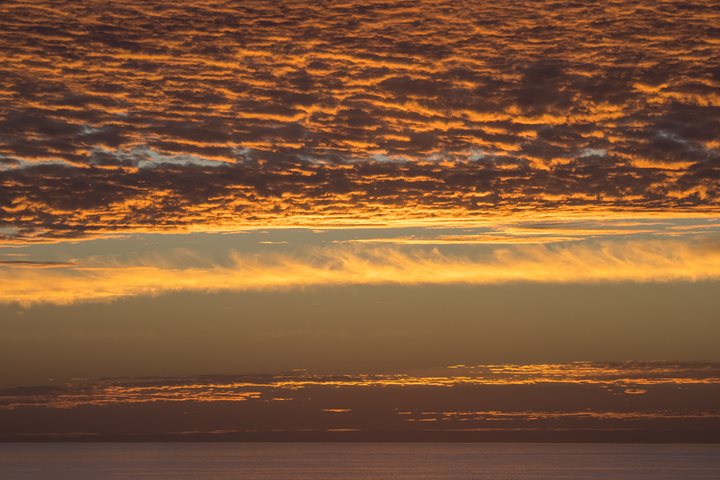We passed numerous humpback whale blows as we rounded the south end of the Cape of Baja California. Small swells were barely noticeable and made whale watching comfortable. Some of the groups were of competitive males with white scars along their dorsal fins from past battles. Research on Hawaiian humpbacks shows that two adult whales swimming together are a male and female. We encountered several pairs as well as some singles.
Later in the morning we found our first cow and calf pair. The calf was probably born in early February as a 12- to 15-foot package that could have weighed up to two tons. The mom will have to nurse it for 10 to 11 months. She will lose weight from providing 100 to 130 gallons of milk per day. It is about 50% butterfat and is squirted forcefully in three-gallon servings into the calf’s hungry mouth. That results in the little creature growing at a foot a month and doubling its length to 30 feet in the first year. The demands on the mother are only beginning. After four to six weeks she must swim slowly and carefully north into the Pacific swells to the summer feeding areas and regain her weight while still taking care of this huge whale of a kid. Sometime during the trip back or in Mexico the calf will be on its own to find other yearlings to hang out with.
San José del Cabo is an ideal stop for the National Geographic Sea Bird because guests can explore this great town’s glass blowing facility, find and watch interesting birds in the Estero San José, or do both in one afternoon. The center of town is at the end of the Boulevard Mijares, where a gigantic Mexican flag ripples in the breezes that blow across a large plaza. The Río San José provides enough water for trees to line many of the streets that give a vibrant and clean appearance to the area. There are no conspicuous street vendors here, and the shops feature high quality and tasteful items that are what make shopping there so appealing. Antiques, handmade rugs, folk art, ceramics, fire opals, silver jewelry, glass blown objects and everything in between can be found in the shops along the streets.
The estero is a truly beautiful place to walk. The paved path looks out over water to a margin of cattails and bulrushes with fan palms for a backdrop. The plentiful water from the river maintains this luxurious habitat. This is also the last freshwater stop for birds flying to mainland Mexico and beyond. Although some of the first birds we saw were common snipes, this was far from a snipe hunt. They were just the first of 44 species on our two-hour outing. Some of the highlights were views of the endemic Xantus’s hummingbird in an orchid tree, all three species of teal, cactus wrens that called and flew about, Wilson’s warblers and yellowthroats, and a close view of a dark phase red-tail.
Once out of the harbor we headed straight to Friar Rocks. This imposing end of the peninsula is an icon of the Cape Region, a place that everyone that comes here must visit. We soon rounded the tip and headed toward the setting sun and the Pacific Ocean.
Most of us assembled on the bow and prepared ourselves for the highlight of the sunset, the possibility of seeing a green flash. There was a distant haze, but we could clearly see the bright orange orb sinking in the west. It was soon squished into a flattened blob with a greenish tinge at both ends. It stayed suspended above the horizon for a moment then vanished.







